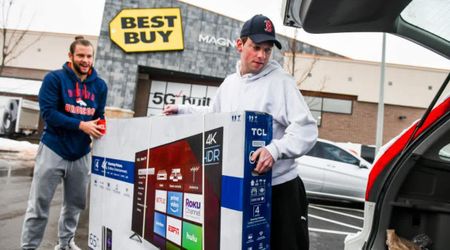Who Really Owns Snapchat? Its Founders, Net Worth, and Revenue

While Snapchat's popularity in the social media landscape is undeniable, the question of its ownership often stumps users. Unlike some other platforms with well-known parent companies, Snapchat's ownership may not be common knowledge. For instance, Google owns YouTube, Chinese company ByteDance owns TikTok, and Meta owns Facebook, Instagram, and WhatsApp. So, who exactly owns Snapchat?

The origin of Snapchat
Snapchat was initially owned by Snapchat Inc. from 2011 to 2016, but now operates under the name Snap Inc. since the rebranding in September 2016. The company's co-founders, Evan Spiegel, and Bobby Murphy, launched Snapchat in September 2011.
During his time as a product design student at Stanford, Evan Spiegel came up with the concept of an app featuring ephemeral messaging for a class project, which his classmates initially dismissed. However, he persisted and joined forces with Bobby Murphy and Reggie Brown, both fellow Stanford students, to work on the idea. Together, they launched the app's prototype, initially known as 'Picaboo.' At a later stage in 2011, Reggie Brown parted ways with the company and later filed a lawsuit against Evan and Bobby, asserting that Snapchat was his original idea. In the end, Reggie Brown received a substantial $158 million settlement as per this article on Screen Rant.
Snapchat co-founders' net worth
Evan Spiegel, the American entrepreneur and co-founder of Snapchat experienced fluctuations in his net worth. At its highest point, his net worth reached approximately $15 billion, but it declined significantly to around $2 billion during the 10-month period from mid-September 2021 to late July 2022, coinciding with Snap's stock price dropping from $83 to approximately $10.

Similarly, Bobby Murphy, the co-founder of Snapchat, faced changes in his net worth. His net worth reached a peak of around $10 billion, but it dropped to $1.5 billion as Snap's stock price declined as per this article by Celebrity Net Worth.
Memories, revenue generation, and expansion
Snapchat's 2016 launch of 'Memories' marked a step towards longer-lasting image storage, reminding users of past events a year later. Revenue generation became a priority, given its initial struggle with losses of over $500 million yearly despite making just $3.4 million in 2014. The introduction of mobile payments in 2015 and Spectacles in 2016 aimed to expand its revenue streams, though the glasses didn't gain widespread popularity. Snapchat ventured into the original video series, Snapchat Originals, with ties to major media companies, trying to reinvigorate its growth amid declining daily active users.

Snapchat's key statistics
1. In 2022, Snapchat's revenue reached $4.6 billion, showing a 12% year-on-year increase. Despite its revenue growth, Snapchat still faced a net loss of $1.4 billion in 2022, marking its ongoing struggle to achieve annual profits as per this article by Business Of Apps.
2. Over 375 million people use Snapchat daily, with 28% of them located in the U.S.
3. From 2020 to 2021, Snapchat's stock value surged by over 350% but later experienced a decline of 70%.
4. In 2022, Snapchat's revenue rose by 12% to reach $4.6 billion, marking the lowest annual percentage growth ever recorded for the company.
Valuation
Snapchat was valued at $25.5 billion at IPO in 2017 but dropped to $16.1 billion value by 2019. In 2021, the company’s market cap rose up more than 350% to $90.9 billion, it has since declined by 79% to $18.3 billion in 2023.

Despite its challenges, Snapchat appears to be far from the brink of failure, showing steady user growth every quarter. The platform has successfully captured a market, particularly among teenagers. However, winning over older users has proven more difficult, and in terms of revenue generation, Snapchat lags far behind the likes of Facebook. Nonetheless, its continued user growth signals a promising future for the company.






















